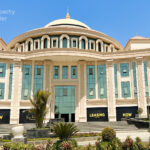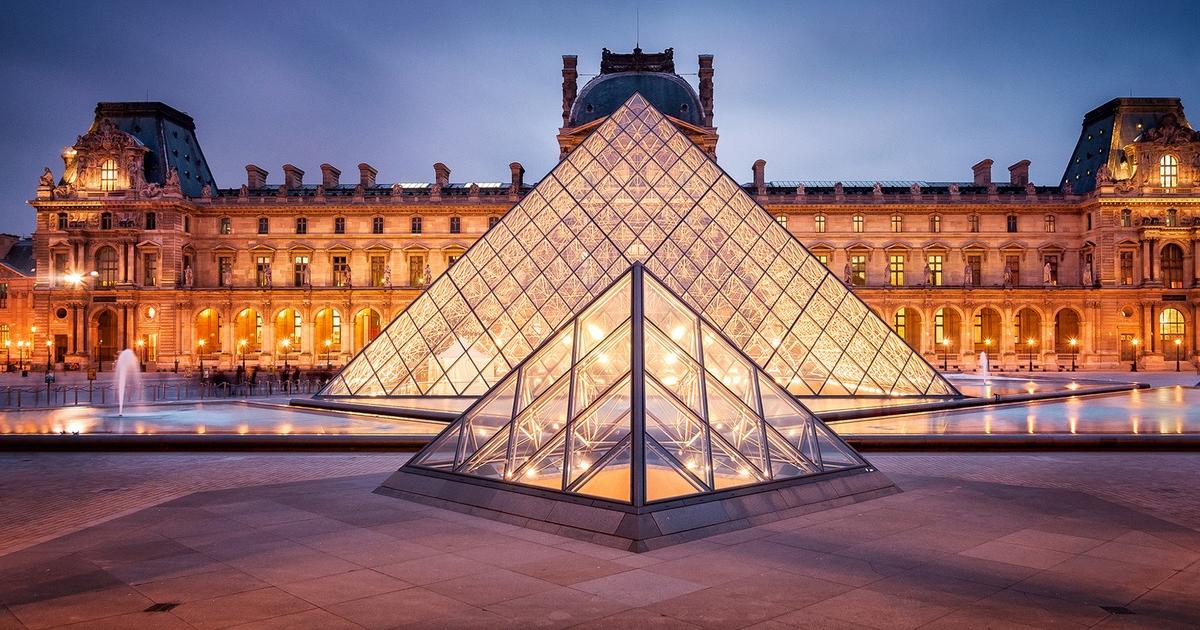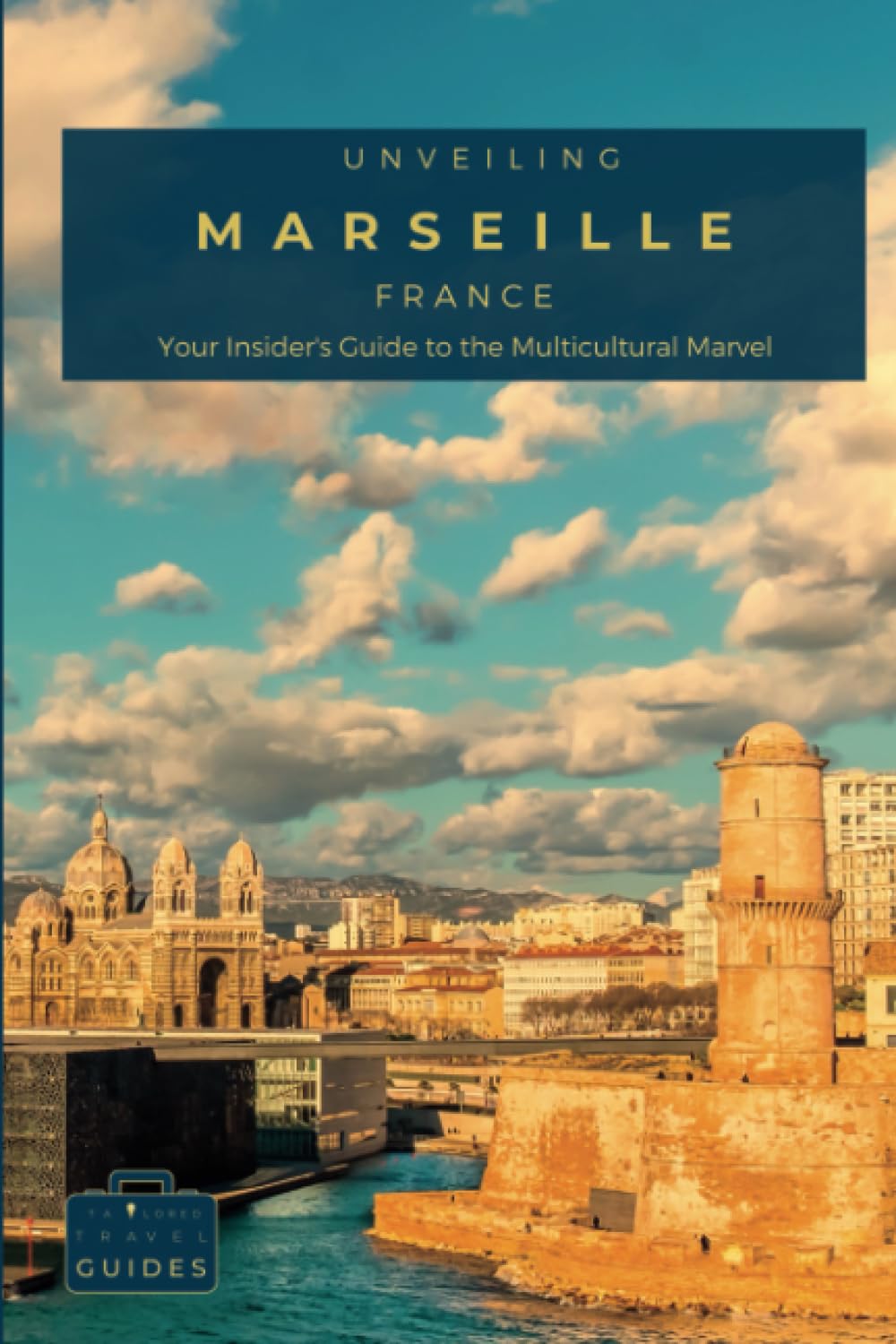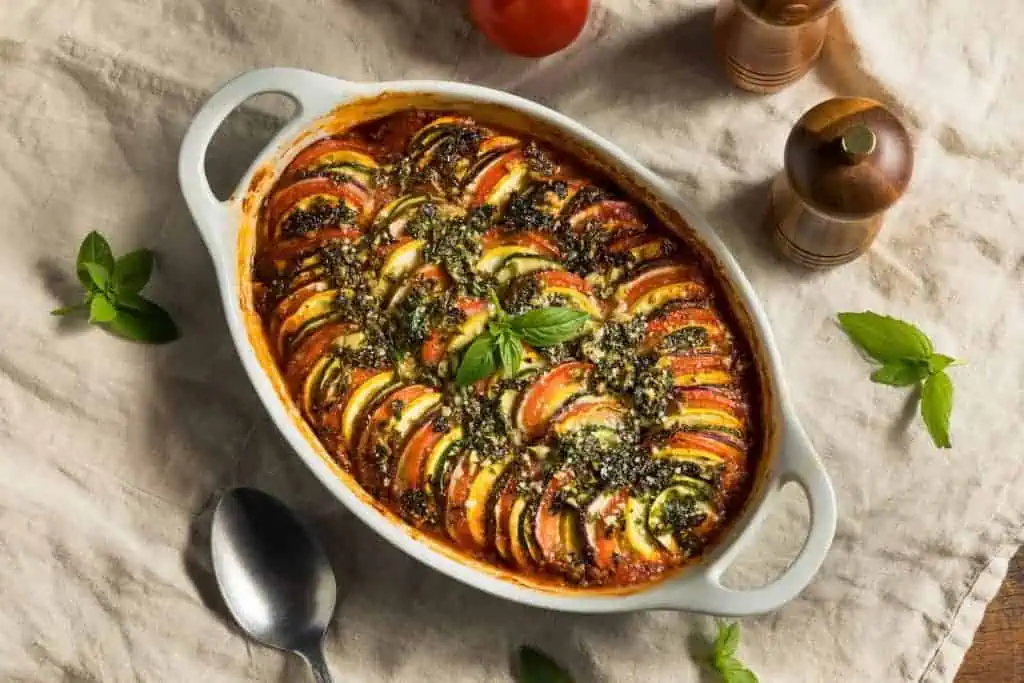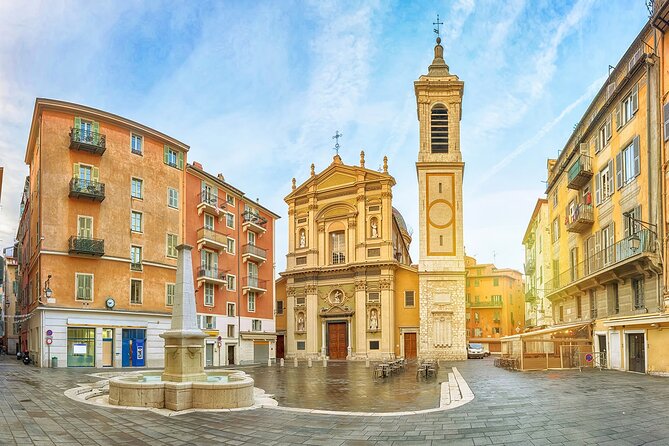
مقدمة
الموقع: تقع الجونة في جمهورية مصر، شمال الغردقة على الساحل الغربي للبحر الأحمر.
المميزات: تعد الجونة منتجعًا تم إنشاؤه ليكون مدينة قائمة بذاتها، وهو من أفضل الوجهات السياحية التي تمكن السائح من الاستجمام والاسترخاء في مصر، حيث يضم إضافة إلى الشواطئ المتعددة ما يقارب 16 فندقًا، وملعبًا للجولف، وكثيرًا من الفيلات ومراكز التسوق والمطاعم، وتتميز بكونها بعيدة عن ازدحام مصر المعتاد.
الطقس: تختلف درجات الحرارة في منطقة الجونة من وقت لآخر على مدى كبير، ويكون تساقط الأمطار فيها ضئيلًا جدًا، وتكون أكثر الأشهر حرارة بالترتيب أغسطس ثم يوليو ثم يونيو، وتتراوح درجات الحرارة في هذه الأشهر ما بين 39.2 درجة مئوية إلى 28.7 درجة مئوية في الليل على وجه الخصوص، وتكون فرصة تساقط الأمطار قليلة جدًا في كل من أوائل شهر يناير وفبراير وأبريل ويونيو، بينما يرجح المطر وتساقط الثلوج في أواخر ديسمبر في العادة، أما بالنسبة للرياح فتصل ذروتها في كل من شهر يونيو وأغسطس وسبتمبر.
أفضل وقت للزيارة: يعد أفضل وقت لزيارة الجونة هو ما بين منتصف يناير وحتى أواخر أبريل، وما بين أواخر أكتوبر وحتى أوائل يناير للاستمتاع بالأنشطة السياحية العامة في الهواء الطلق على أفضل وجه، أما لممارسة الأنشطة التي يلزمها طقس حار يجب الذهاب في الفترة ما بين منتصف أبريل وحتى أوائل يوليو، وما بين أوائل سبتمبر وحتى أوائل نوفمبر.
العملة: العملة المحلية الرسمية في الجونة هي الجنيه المصري، ويساوي الجنيه المصري 0.063 دولار أمريكي.
- Unveiling the Charm of Provence: A Tourist’s Guide


Source: cdn.roadsandkingdoms.com Introduction
The allure of Provence
Provence captivates visitors with its enchanting landscapes, vibrant colors, and rich cultural heritage. From the stunning lavender fields to golden sun-drenched vineyards, it feels like stepping into a painting. The region’s charm is not just in its scenery, but also in its warm, inviting atmosphere where local traditions thrive.
Why visit Provence
With endless experiences waiting, here’s why Provence should top your travel list:
- Breathtaking Nature : Explore iconic sights like the Calanques and Luberon Valley.
- Culinary Delights: Savor incredible cheeses, olives, and regional wines.
- Cultural Richness : Discover Roman ruins, art, and fuel your spirit with local festivals.
Each corner of Provence tells a story, inviting you to create your very own.

Source: m.media-amazon.com Geography and Climate of Provence
Overview of Provence’s geography
Nestled in southeastern France, Provence is a diverse region characterized by its rolling hills, stunning coastline, and picturesque villages. The landscape offers a delightful combination of:
- Mountains : The majestic Alps to the north provide breathtaking views.
- Rivieras : The Mediterranean coastline graces the southern border.
- Vineyards and Olive Groves : Sprawl across fertile valleys, offering a feast for the eyes and palate.
Each area is distinct, revealing unique aspects of Provençal life.
Understanding Provence’s climate
Provence enjoys a Mediterranean climate, perfect for outdoor enthusiasts. Travelers can expect:
- Mild Winters : Ideal for exploring quaint towns without the crowds.
- Hot, Dry Summers : Perfect for sun-soaked days and beach outings.
- Beautiful Springs and Falls : Mild temperatures highlight blooming flowers and vibrant autumn leaves.
This climate shapes the region’s agricultural bounty, making Provencal produce unparalleled in taste and freshness.

Source: m.media-amazon.com Top Destinations in Provence
Exploring Avignon
Avignon stands out as a historical gem, known for the stunning Palais des Papes, a symbol of its papal history. Strolling along the Rhône River, visitors can enjoy:
- The iconic Pont Saint-Bénézet : Famous for its charming song.
- Vibrant markets : Experience the local culture and flavors.
A visit to Aix-en-Provence
Next on the journey is Aix-en-Provence, a city bursting with art and elegance. With its:
- Lively squares : Enjoy the atmosphere at Café de la Paix.
- Art galleries : Don’t miss the chance to see works by Cézanne.
The picturesque Luberon Valley
The Luberon Valley beckons with its stunning landscapes and quaint hilltop villages. Here, you can:
- Wander through Gordes : Marvel at its striking stone architecture.
- Enjoy local markets : Taste fresh produce and handmade goods.
Charming Arles
Finally, Arles enchants with its Roman ruins and vibrant arts scene. You’ll discover:
- The Roman amphitheater : A testament to its historical significance.
- Van Gogh’s inspirations : Walk the streets that sparked his creativity.
Each destination in Provence offers a unique experience, filled with cultural richness and stunning vistas.
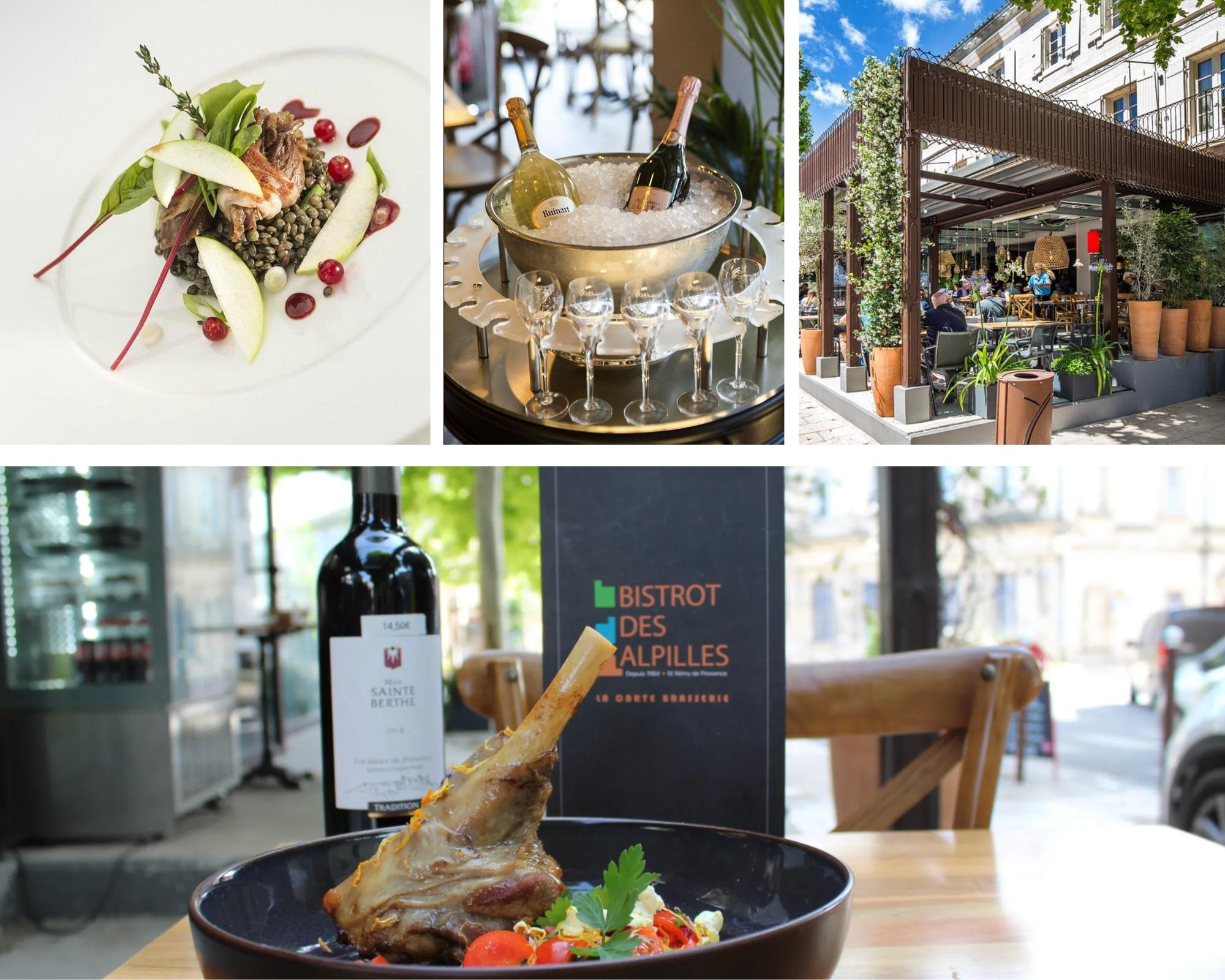
Source: cloudfront.wheretostay.com Culinary Delights of Provence
Traditional Provencal dishes
Exploring the culinary landscape of Provence is a feast for the senses. Traditional dishes reflect the region’s bountiful produce. Consider trying:
- Ratatouille : A vibrant vegetable dish bursting with summer flavors.
- Bouillabaisse : A hearty fish stew infused with herbs and spices.
- Tarte Tropézienne : A delightful sweet brioche filled with cream.
Each bite tells a story and connects you to the land.
Wine tasting in Provence
No trip to Provence is complete without indulging in its exceptional wines. Renowned for their quality, the vineyards here offer tastings showcasing:
- Rosé : Light and refreshing, perfect for warm afternoons.
- Red blends : Often made from Grenache and Syrah, rich in flavor.
- Local gems : Explore lesser-known wineries for unique experiences.
Whether enjoying a glass in a sun-drenched vineyard or pairing wine with local dishes, Provence invites you to savor every moment.

Source: francebylocals.com Cultural Heritage of Provence
Provence’s Roman roots
Provence’s rich history is vividly illustrated through its Roman heritage. The remnants of ancient civilization are everywhere, with significant sites like:
- The amphitheater in Arles : Still hosts performances and events today.
- Pont du Gard : An impressive aqueduct that showcases engineering brilliance.
These sites offer a glimpse into the past, showing how Roman culture shaped the region.
Celebrating Provence’s arts and crafts
Art and craftsmanship thrive in Provence, reflecting the vibrant culture. The region boasts various artistic expressions, including:
- Handcrafted pottery : Notably from the town of Moustiers-Sainte-Marie.
- Textiles and linens : Renowned for their quality and design.
Local art markets brim with talent, allowing visitors to collect unique pieces while supporting artisans dedicated to keeping traditions alive. This cultural heritage enriches every aspect of life in Provence.

Source: thecreativeadventurer.com Outdoor Activities in Provence
Hiking in the Calanques National Park
For outdoor enthusiasts, the Calanques National Park offers breathtaking hiking trails along rugged cliffs and azure waters. Exploring its scenic routes leads to:
- Hidden coves : Perfect for a refreshing swim.
- Stunning viewpoints : Capture panoramic views of the Mediterranean.
Hiking here is not just about exercise; it’s about immersing yourself in nature’s beauty.
Lavender fields in bloom
When summer arrives, the lavender fields of Provence burst into vibrant colors, creating a mesmerizing landscape. Visitors can:
- Take picturesque strolls : Among miles of fragrant blooms.
- Attend local festivals : Celebrate the lavender harvest through music and artisan markets.
It’s a sensory experience that delights the eyes and scents.
Cruising the Rhone River
A cruise along the Rhone River provides a unique perspective of Provence’s charming villages and stunning landscapes. Enjoy:
- Relaxing boat rides : Take in the serene surroundings.
- Gourmet dining onboard : Savor local cuisines while drifting past historical landmarks.
Each outdoor adventure in Provence offers a chance to connect with nature and experience the region’s unparalleled beauty.

Source: m.media-amazon.com Practical Tips for Traveling in Provence
Best time to visit Provence
Timing your visit to Provence can enhance your experience significantly. The best times to explore are:
- Spring (April to June) : Enjoy mild weather and blooming fields.
- Summer (July to August) : Experience vibrant festivals, but expect larger crowds.
- Fall (September to October) : Perfect for wine lovers, with the grape harvest in full swing.
Each season offers a unique taste of Provençal life.
Transportation options in Provence
Getting around Provence is convenient with various transportation options available, including:
- Car rentals : Ideal for exploring remote villages at your own pace.
- Trains and buses : Cost-effective for traveling between major cities.
- Bicycles : A popular choice for leisurely tours through the countryside.
Consider what best suits your adventure style!
Accommodation choices in Provence
Finding the perfect place to stay enhances your trip. Provence offers a range of accommodations, such as:
- Charming bed-and-breakfasts : Experience local hospitality.
- Luxury hotels : For those seeking pampering.
- Villas and cottages : Great for families or groups looking for a homey feel.
With these practical tips, travelers can navigate and enjoy the beauty of Provence more seamlessly.

Source: culturedvoyages.com Conclusion
Recap of Provence’s charm
Provence is a captivating blend of stunning landscapes, rich history, and vibrant culture. From the picturesque lavender fields to the ancient ruins, every corner holds something special. The culinary delights and outdoor adventures further enrich the experience, making it a region that leaves a lasting impression.
Final thoughts on visiting Provence
As you plan your journey, remember to:
- Immerse yourself in local traditions : Engage with the friendly locals.
- Explore at your own pace : Each village offers unique character.
- Savor every moment : Take time to appreciate the beauty around you.
Visiting Provence is more than a trip; it’s an invitation to embrace the magic of southern France.
- Elevate Your Palate with Classic French Dishes

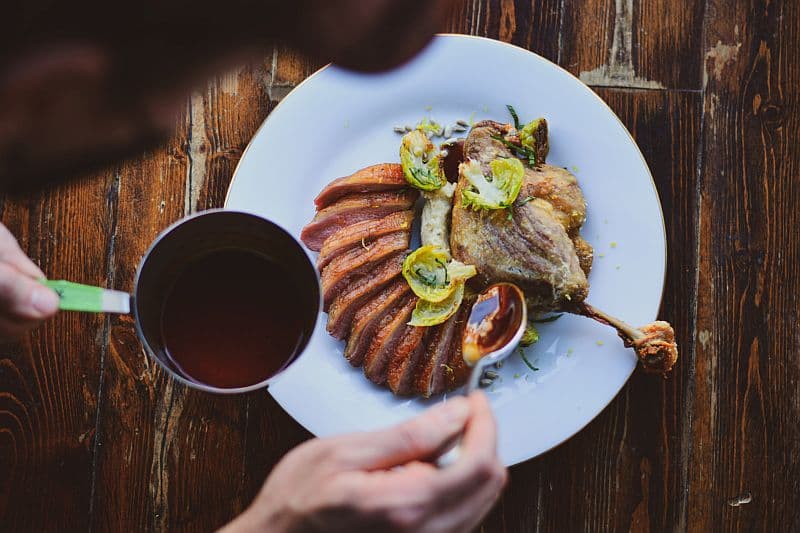
Source: gobargingwp-s3.s3.eu-west-1.amazonaws.com The Essence of Classic French Dishes
Introduction to French Cuisine
French cuisine is renowned for its rich flavors, sophisticated techniques, and artistic presentation. It embodies a deep connection to the land, the seasons, and tradition. The art of French cooking invites both novices and professionals alike into a world of culinary artistry that emphasizes quality ingredients and meticulous preparation.
Historical Significance of Classic French Dishes
Classic French dishes not only tantalize the taste buds but also tell tales of a rich culinary heritage. Many of these dishes have historical roots that trace back centuries, reflecting the cultural tapestry of France.
Key milestones include:
- The Influence of Royalty : Prominent chefs served French kings, elevating the standards of cooking.
- Regional Diversity : Each region contributes uniquely, from savory coq au vin from Burgundy to aromatic bouillabaisse from Marseille.
- Culinary Techniques : Classic methods like sautéing and braising became foundational, shaping global culinary practices.
Understanding this history enriches one’s appreciation of the food’s flavors and intricacies, making dining an experience steeped in culture.

Source: woyago.com Must-Try Classic French Dishes
Coq au Vin
Coq au Vin, a hearty dish of chicken braised with wine, mushrooms, and bacon, is a beautiful representation of rustic French cooking. Each family has its own twist, often bringing warmth to cold evenings.
Ratatouille
This colorful vegetable medley celebrates summer produce, marrying eggplant, zucchini, and bell peppers in a harmonious embrace of flavors. It’s not just a dish; it’s a canvas of garden freshness and a staple in Provençal cuisine.
Bouillabaisse
Originating from the coastal city of Marseille, bouillabaisse is a fragrant fish stew simmered with saffron, garlic, and herbs. Sharing a bowl with friends evokes the Mediterranean breeze right at the table.
Beef Bourguignon
Slow-cooked in red wine with carrots and onions, beef bourguignon is a comfort dish that fills kitchens with the scent of home. It’s a go-to for special occasions, often served alongside crusty bread for a perfect pairing.
Escargots
For the adventurous diner, escargots, or snails cooked in garlic butter, offer a unique taste. Their delicate texture draws food lovers into the rich culinary tradition of France, providing an experience that is as thrilling as it is delicious.
These classic French dishes not only represent the culinary artistry of France but also invite everyone to gather around the table and share delightful moments.
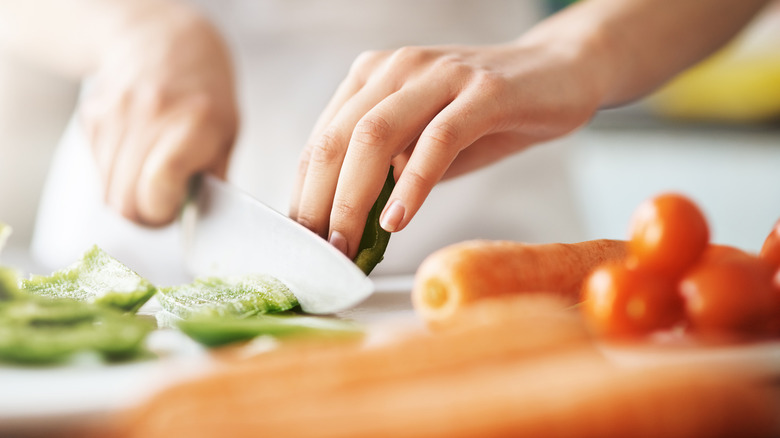
Source: www.chowhound.com Elevating Your Culinary Skills with French Cooking Techniques
Sauteing and Flambeing
Sauteing is a quick cooking method that enhances food flavor by browning ingredients in a hot pan. A personal favorite is when I flambé my shrimp with brandy, watching the flames dance as they infuse a rich taste into the dish.
Reduction Sauces
Reduction sauces are all about concentrating flavors. By simmering a liquid until it thickens, chefs can create sauces that add depth to any meal. For instance, a red wine reduction over steak transforms a simple dinner into an elegant feast.
Braising and Stewing
Braising and stewing combine multiple cooking methods, bringing out the best flavors in tougher cuts of meat. Taking time to slow-cook beef with aromatic vegetables creates a comforting dish that brings family together.
Integrating these classic French techniques into everyday cooking opens doors to vibrant flavors and a deeper appreciation for this captivating culinary art. Each method tells a story, enriching your cooking journey with delicious results.
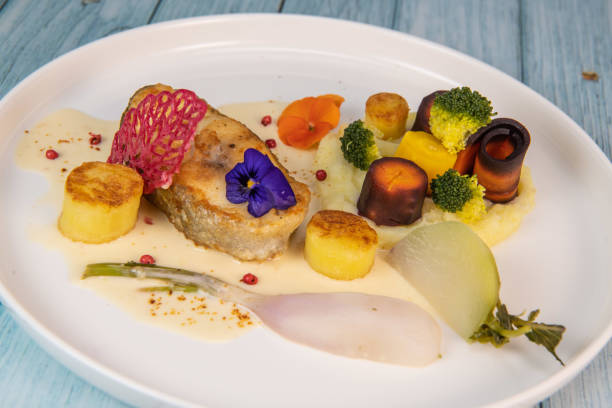
Source: monpanierlatin.co.uk Exploring French Culinary Culture
Fine Dining Etiquette in France
When savoring a meal in a French restaurant, etiquette plays a crucial role. Simple gestures, such as keeping both hands on the table and not resting elbows, reflect respect for the dining experience. I learned this the hard way during my first meal in Paris—an awkward elbow drop led to a few giggles!
Regional Influences on French Cuisine
French cuisine thrives on regional diversity, showcasing local specialties across the country. For instance:
- Brittany : Famous for its crepes and seafood.
- Provence : Known for lavender-infused dishes and ratatouille.
- Alsace : Offers hearty fare like choucroute garnie and white wines.
Each region brings its own flavors and traditions, making every French meal an exploration of the nation’s rich tapestry of culture. Understanding these influences enhances appreciation, turning meals into delightful journeys across France.
.jpg)
Source: files.autoblogging.ai The Art of Plating and Presentation in French Gastronomy
Traditional French Plating Styles
Plating in French cuisine is as important as the cooking itself. Traditional styles often emphasize symmetry and balance. A memorable experience was plating my first coq au vin; arranging the chicken and vegetables artfully transformed a simple dish into something visually stunning.
Garnishing Techniques
Garnishing takes presentation to another level. Techniques include:
- Herb Sprigs : Fresh parsley or thyme can brighten up the plate.
- Sauce Drizzle : A ribbon of sauce surrounding the dish adds elegance.
- Edible Flowers : Introduce color and flair, making the dish inviting.
With these techniques, each meal transforms into a feast for the eyes, honoring the meticulous artistry French chefs are renowned for. Embracing these elements of presentation allows home cooks to create delightful experiences that celebrate the beauty of food.

Source: koala.sh Wine Pairing with Classic French Dishes
Understanding French Wine Regions
France boasts a rich tapestry of wine regions, each with unique characteristics. Visiting Bordeaux, I discovered the bold reds that pair beautifully with robust dishes like beef bourguignon. From the crisp whites of Alsace to the luxurious champagnes of the Champagne region, understanding these regions enhances every dining experience.
Perfect Wine Matches for Classic French Cuisine
Pairing wine with food can elevate your meal significantly. Here are some classic matches:
- Coq au Vin : A light-bodied Pinot Noir complements the wine-infused flavors.
- Ratatouille : A dry Rosé brings out the freshness of summer vegetables.
- Bouillabaisse : A white wine, like a herbal Picpoul de Pinet, enhances seafood delicacies.
By embracing the intricate relationship between food and wine, one can savor meals in their entirety, turning dining into an odyssey through the heart of France. Each sip and bite harmonize, making each occasion special.
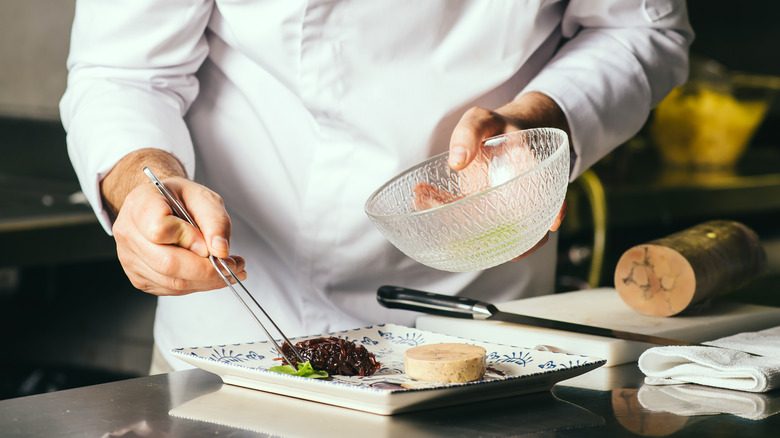
Source: www.foodrepublic.com Bringing a Taste of France to Your Home Kitchen
Essential Ingredients in French Cooking
To create authentic French dishes at home, focus on key ingredients. Fresh herbs, like thyme and rosemary, add aroma, while quality butter—often a staple in French cooking—enhances flavor. During my last culinary adventure, buying local ingredients transformed a simple ratatouille into a vibrant feast.
Tips for Recreating Classic French Dishes
To capture the essence of French cuisine:
- Use Fresh Produce : Seasonal ingredients sing in dishes.
- Follow Techniques : Mastering sautéing and roasting elevates flavors.
- Take Your Time : Allow flavors to meld; patience breeds perfection.
By embracing these essentials, home cooks can recreate the delightful experience of dining in France. Each meal becomes an opportunity to connect with culinary traditions, transforming your kitchen into a bistro filled with the aromas and flavors of French gastronomy.

Source: amazingfoodanddrink.com Experiencing French Culinary Delights Beyond Borders
French Culinary Tourism
Venturing into French culinary tourism offers an immersive experience filled with tasting menus and cooking classes. On my trip to Lyon, I discovered local bistros where traditional dishes are prepared with love. Sampling regional specialties like queijadas and exploring local markets deepens one’s appreciation for the diversity of French cuisine.
Fusion Cuisine Incorporating French Flavors
Fusion cuisine creatively blends French techniques with global influences. For instance, a Vietnamese banh mi can be elevated with classic French pâté, resulting in a delightful marriage of flavors. Experimenting with these combinations at home adds a contemporary twist to culinary traditions.
By embracing both culinary tourism and fusion cuisine, food lovers can expand their horizons and bring the spirit of France to their plates, creating unforgettable dining experiences that transcend geographical boundaries. Each bite tells a story, reflecting the vibrant world of French gastronomy.
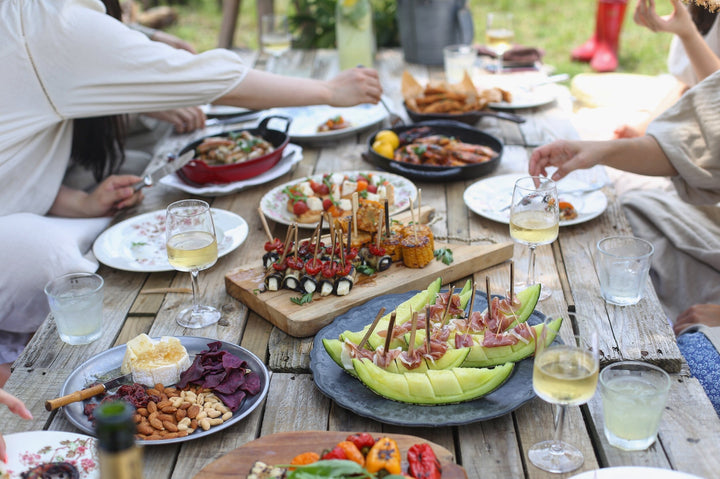
Source: resfortes.com Conclusion
Recap of Classic French Dishes
Throughout this culinary journey, classic French dishes like coq au vin and ratatouille have enriched our plates and palates. Each dish not only brings a unique flavor profile but also carries a slice of French history and culture. Reflecting back on these meals often inspires a sense of connection to the culinary arts.
Embracing the Artistry of French Cooking
Embracing the artistry of French cooking means celebrating its techniques, flavors, and presentations. From the meticulous plating to the joy of using fresh ingredients, each step can transform our kitchens into a culinary canvas. By incorporating these elements into daily cooking, one truly embodies the spirit of French gastronomy, making every meal a delightful experience.
As you explore and recreate these dishes, remember that cooking is an art, and every dish is a chance to tell your own story—a delicious journey that bridges cultures and brings us together.
- Unveiling the Hidden Gems: Exploring Nice’s Iconic Landmarks


Source: i.ytimg.com Introduction
Overview of Nice’s Hidden Gems
Nestled along France’s stunning Côte d’Azur, Nice offers more than just beautiful beaches. While the famous Promenade des Anglais steals the spotlight, the city brims with hidden gems waiting to be discovered. From charming alleyways to local art hubs, each corner reveals a piece of Nice’s rich cultural tapestry.
Importance of Exploring Iconic Landmarks
Exploring Nice’s iconic landmarks isn’t just about sightseeing; it’s a journey into the city’s heart. These sites often reflect the history and culture that shape modern-day Nice, offering visitors an unforgettable experience. Here are a few reasons why discovery matters:
- Cultural Connection : Learning the stories behind landmarks fosters a deeper connection with the local culture.
- Unique Experiences : Each landmark holds unique experiences, whether it’s art, cuisine, or architecture.
- Personal Memories : Creating personal moments at these sites makes travels more memorable.
By embracing both the famous and lesser-known attractions, visitors can fully appreciate the beauty and diversity of Nice.

Source: i.ytimg.com The Promenade des Anglais
History and Significance
The Promenade des Anglais, a stunning waterfront walkway, is a testament to Nice’s rich history. Originally a dusty road for locals, it transformed in the 19th century, thanks to English aristocrats who sought the healing sunshine of the French Riviera. Today, this promenade stands not just as a leisure spot, but a symbol of Nice’s vibrant identity.
Must-See Attractions Along the Promenade
As you stroll along the Promenade des Anglais, several must-see attractions beckon:
- Hotel Negresco : This iconic hotel, resembling a lavish pink cake, showcases an impressive art collection.
- Blue Chairs : The famous blue chairs lining the promenade are perfect for a leisurely break while enjoying the breathtaking sea views.
- Palais de la Méditerranée : A striking building that hosts various events and offers nightlife experiences.
Whether it’s for a leisurely walk or a glimpse into history, the Promenade des Anglais is key to any visit to Nice, blending relaxation with exploration perfectly.

Source: itinari-images.s3.eu-west-1.amazonaws.com Castle Hill (Colline du Château)
Elevating Views of Nice
After a leisurely stroll along the Promenade des Anglais, a visit to Castle Hill (Colline du Château) promises breathtaking views. This historic hill overlooks the city and offers panoramic vistas of Nice’s stunning coastline and vibrant rooftops. Climbing to the top, visitors are often rewarded with views that leave a lasting impression, perfect for that Instagram shot!
Exploring the Ruins and Gardens
Nestled atop Castle Hill are the ruins of a 17th-century castle and beautifully landscaped gardens. As you wander through the area, be sure to:
- Visit the Waterfall : A serene waterfall offers a peaceful escape amidst the lush greenery.
- Check Out the Ruins : The remnants of the castle tell tales of its glorious past and invite exploration.
- Stroll Through the Gardens : The well-maintained gardens provide a tranquil setting for relaxation.
Castle Hill is not just a historical site; it’s a perfect blend of nature, history, and stunning views that enhances any visit to Nice.

Source: cdn-dggie.nitrocdn.com Musée Matisse
Tribute to an Artistic Master
After soaking in the stunning views from Castle Hill, art lovers must head to the Musée Matisse. This museum is a heartfelt tribute to the renowned artist Henri Matisse, who spent much of his life in Nice, drawing inspiration from its vibrant colors and serene landscapes. Walking through the exhibits, one can truly feel Matisse’s creative spirit.
Highlights of the Museum’s Collection
Inside the museum, visitors are treated to a rich collection of Matisse’s work, showcasing his evolution as an artist. Here are some highlights not to miss:
- The Snail (1953) : A striking piece displaying his signature vibrant colors and abstract forms.
- Portraits : Beautiful depictions of his friends and family, revealing his unique style.
- Paper Cut-Outs : These whimsical creations exemplify Matisse’s innovation and love for shape and color.
The Musée Matisse is a must-visit, offering insights into the life and creativity of a true master, making it an enriching addition to any Nice itinerary.

Source: a.storyblok.com Old Town (Vieux Nice)
Charming Streets and Architecture
After exploring the artistic treasures of the Musée Matisse, a stroll through Old Town (Vieux Nice) offers a delightful contrast with its charming, narrow streets and vibrant buildings. The pastel colors of the buildings and the aromatic scent of local delicacies create an inviting atmosphere that’s perfect for wandering.
Delving into the Local Culture and Cuisine
Vieux Nice is not only about stunning architecture; it’s a hub of local culture and cuisine. As you explore, be sure to:
- Visit the Cours Saleya Market : A bustling market known for fresh produce, flowers, and local specialties.
- Try Socca : This chickpea pancake is a local favorite, available at numerous eateries.
- Explore Hidden Cafes : Quaint cafes dot the streets, offering the perfect spot to sip a café au lait while people-watching.
Old Town is a vibrant tapestry of history, culture, and culinary delights, inviting visitors to experience Nice in its most authentic form.

Source: photos.smugmug.com Nice Cathedral (Cathédrale Sainte-Réparate)
Architectural Marvel and Religious Heritage
After savoring local flavors in Old Town, a visit to the Nice Cathedral (Cathédrale Sainte-Réparate) can’t be missed. This magnificent structure, built in the 17th century, features a Baroque facade that captivates every passerby. Its towering spires and intricate details are a testament to the architectural prowess of its time, steeped in religious significance.
What to Discover Inside the Cathedral
Stepping inside the cathedral offers a serene escape filled with breathtaking art and history. Key highlights include:
- Stunning Altarpiece : Find the beautifully crafted altarpiece depicting the Assumption of the Virgin Mary.
- Frescoed Ceilings : Admire the ornate frescoes that adorn the ceilings, telling stories of religious significance.
- Historic Relics : Discover various relics, including those believed to belong to Saint Réparate, the cathedral’s namesake.
The Nice Cathedral harmoniously blends architectural beauty with spiritual heritage, making it a must-visit destination for anyone exploring the rich tapestry of Nice’s history.

Source: www.travelfranceonline.com Cimiez Monastery and Roman Ruins
Ancient Treasures in Modern Nice
Following the tranquil experience at the Nice Cathedral, a visit to the Cimiez Monastery and nearby Roman ruins unveils a journey into the ancient past. Nestled on a hill, this area is steeped in history, where medieval architecture meets remnants of a Roman civilization that once thrived in Nice, offering a glimpse into its rich heritage.
Unraveling the History of Cimiez
As you explore the Cimiez Monastery, take note of its serene gardens and fascinating history. Highlights include:
- Architectural Features : The monastery showcases a beautiful Baroque church with intricate details.
- Roman Amphitheater : Nearby, the ruins of a Roman amphitheater provide a captivating glimpse into daily life centuries ago.
- Archaeological Museum : This museum houses artifacts from both the Roman period and the monastery, enriching the experience.
Cimiez weaves together the threads of history, allowing visitors to unravel the stories of ancient civilizations while enjoying the stunning scenery of modern Nice.

Source: photos.smugmug.com Modern and Contemporary Art Museum (MAMAC)
Showcasing Avant-Garde Works
After immersing yourself in history at Cimiez, the Modern and Contemporary Art Museum (MAMAC) offers a vibrant contrast with its focus on avant-garde artworks. Located in the heart of Nice, the museum’s striking architecture and dynamic collections challenge traditional boundaries, making it a haven for art enthusiasts and casual visitors alike.
Notable Artists and Exhibitions
Inside MAMAC, visitors can explore an impressive array of modern art from both local and international artists. Key highlights include:
- Yves Klein : Discover works from this pioneering artist known for his unique blue canvases.
- Niki de Saint Phalle : Experience her colorful, whimsical sculptures that defy convention.
- Temporary Exhibitions : The museum frequently hosts rotating exhibitions, providing a fresh experience with each visit.
MAMAC not only showcases significant artistic movements but also invites visitors to engage with contemporary issues, making it a must-visit destination in Nice for anyone passionate about modern art.

Source: unforgettabletravel.com Conclusion
Recap of Nice’s Iconic Landmarks
As your journey through Nice comes to a close, it’s clear that the city is a treasure trove of iconic landmarks. From the stunning Promenade des Anglais to the artistic treasures of the Musée Matisse, each location tells a unique story. The rich history, striking architecture, and vibrant culture make Nice a truly captivating destination.
Final Thoughts on Unveiling the Hidden Gems
Exploring Nice means unraveling both its well-known sights and its hidden gems. Don’t forget to:
- Wander through the enchanting streets of Vieux Nice.
- Experience the tranquility of Cimiez Monastery.
- Embrace contemporary creativity at MAMAC.
Each visit to Nice offers a chance to discover something new, ensuring that every trip remains unforgettable. Dive deeper into this beautiful city, and let its charm captivate you time and again!
- Wine, History, and Culture: Exploring Bordeaux’s Tourism Treasures

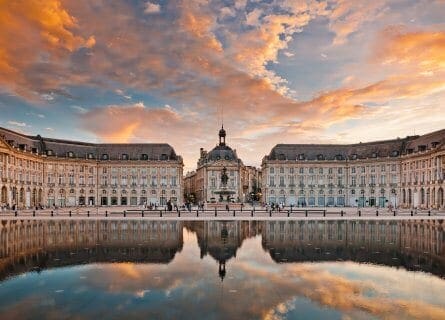
Source: www.cellartours.com Introduction
Overview of Bordeaux
Nestled in the southwestern part of France, Bordeaux is not just a city; it’s an emblem of elegance. Renowned for its picturesque vineyards, historic architecture, and vibrant culture, Bordeaux captures the essence of French artistry and craftsmanship. The city’s stunning waterfront and charming old town entice visitors to explore its rich legacy.
Significance of Wine, History, and Culture
Bordeaux’s identity is intertwined with wine, making it a global benchmark for quality. Its significance can be highlighted through:
- Historical Roots : Tracing back to Roman times, its viticultural innovations have influenced modern winemaking.
- Cultural Festivals : Events like the Bordeaux Wine Festival celebrate this classic beverage.
- Culinary Delights : The local cuisine perfectly complements its wines, further enhancing the Bordeaux experience.
Every sip of Bordeaux wine tells a story woven into the fabric of time, culture, and community.

Source: bordeauxwinevacations.com History of Bordeaux
Ancient Origins
The roots of Bordeaux stretch deep into history, with its ancient origins dating back to the Roman Empire. The Romans recognized the region’s potential for viticulture, establishing vineyards that laid the groundwork for Bordeaux’s fame.
Medieval Influence
During the medieval period, Bordeaux evolved as a pivotal trade port, enhancing its wine industry. Noteworthy events include:
- The 1152 Marriage : The union of Eleanor of Aquitaine and Henry Plantagenet connected Bordeaux to England, amplifying its wine commerce.
- Trade Relationships : Bordeaux’s wines became a staple in the British market, enriching both cultures.
Modern Developments
Fast forward to the 19th century, Bordeaux experienced modernization with technological advances in winemaking. The establishment of the Bordeaux Wine Classification in 1855 standardized quality, maintaining its prestigious reputation. Today, the blend of ancient and modern creates a unique tapestry, inviting exploration for history enthusiasts and wine lovers alike.

Source: rideandseek.com Wine Regions in Bordeaux
Left Bank vs. Right Bank
When it comes to Bordeaux, two primary regions stand out: the Left Bank and the Right Bank, each boasting distinct characteristics. The Left Bank, often associated with Cabernet Sauvignon, is celebrated for its powerful, full-bodied reds, while the Right Bank, dominated by Merlot, tends to produce softer, fruitier wines.
- Left Bank Highlights
- Home to iconic communes like Médoc and Graves.
- Renowned estates like Château Margaux.
- Right Bank Highlights
- Features Libournais, including famous areas like Saint-Émilion.
- Notable for Château Pétrus and its luxurious Merlot blends.
Classification of Bordeaux Wines
The classification of Bordeaux wines further reflects the region’s prestige. Established in 1855, the classification ranks wines from top producers, highlighting quality and heritage.
Key classifications include:
- Cru Classé : Premier classified growths such as Château Lafite Rothschild.
- Grand Cru : Generally refers to exceptional quality wines, especially on the Right Bank.
Notable Vineyards and Chateaux
Bordeaux is home to numerous esteemed vineyards and châteaux that represent its rich viticultural heritage.
For instance:
- Château Latour : Known for its exceptional aging potential.
- Château Cheval Blanc : A Right Bank gem, celebrated for its complex blends.
Each vineyard tells a story of tradition and innovation, making Bordeaux a dream for both casual drinkers and connoisseurs alike. The diversity in regions and classifications ensures that there’s a perfect bottle for everyone.
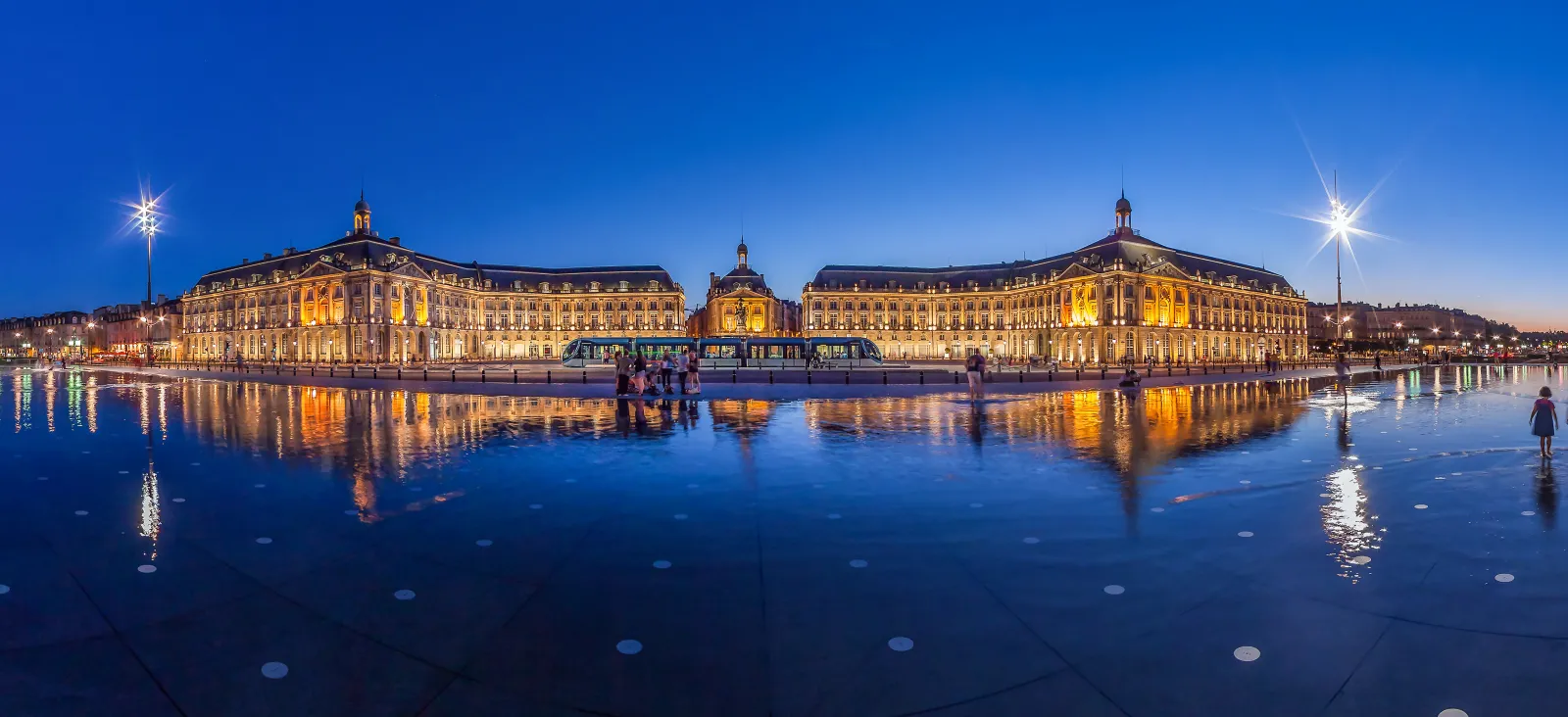
Source: www.bordeaux-tourism.co.uk Cultural Attractions in Bordeaux
UNESCO World Heritage Sites
Bordeaux’s charm is not limited to its vineyards; it boasts several UNESCO World Heritage Sites that showcase its architectural beauty. The Port of the Moon, recognized for its historical significance, features stunning 18th-century buildings and lovely riverfront views, making it a perfect place for leisurely strolls.
Museums and Galleries
Art enthusiasts will find a plethora of museums and galleries in Bordeaux. For example:
- Musée des Beaux-Arts : Home to an impressive collection, including works by renowned artists like Delacroix.
- CAPC Musée d’Art Contemporain : Showcases contemporary art in a former warehouse, offering an eclectic experience.
Gastronomy and Local Cuisine
No visit to Bordeaux is complete without indulging in its rich gastronomy. Local cuisine is a delightful fusion of flavors:
- Canelés : A sweet pastry with a caramelized crust and soft custard center.
- Duck Confit : A traditional dish that beautifully represents the region’s culinary style.
Bordeaux invites visitors to immerse themselves in its vibrant culture, where historical landmarks and delectable food harmonize to create a truly memorable experience.

Source: www.visitfrenchwine.com Tourism in Bordeaux
Wine Tours and Tastings
Embarking on wine tours and tastings in Bordeaux is a quintessential experience that every visitor should embrace. Many vineyards offer guided tours where you can explore breathtaking landscapes and learn about the winemaking process firsthand.
- Personal Recommendation : One unforgettable wine tour I took featured both historical insights and tastings of exquisite vintages.
Festivals and Events
Bordeaux’s vibrant culture comes alive through its numerous festivals and events. The Bordeaux Wine Festival, held every two years, showcases local wines paired with music and gastronomy, creating a festive atmosphere.
- Tip : Participating in these events is an excellent way to mingle with locals and taste various wines.
Accommodation Options
When it comes to staying in Bordeaux, the options are diverse. From luxury hotels to charming guesthouses, there’s something for everyone:
- Luxury : Les Sources de Caudalie offers a spa experience in the vineyards.
- Boutique : Hotel de Sèze combines elegance with a central location.
With a myriad of activities, events, and places to stay, Bordeaux is truly an enchanting destination that fulfills every traveler’s wishes.

Source: www.visitfrenchwine.com Impact of Wine Tourism on Bordeaux
Economic Benefits
Wine tourism has significantly boosted Bordeaux’s economy, creating jobs and generating revenue for local businesses. The influx of tourists contributes to various sectors, such as hospitality, retail, and food services, enhancing the city’s overall economic health.
- Example : Many local restaurants and artisanal shops thrive thanks to the diverse visitor traffic.
Sustainability Practices
Bordeaux wineries are increasingly adopting sustainable practices to appeal to eco-conscious travelers. Initiatives include organic farming, water conservation, and reduced carbon footprints.
- Highlight : Several vineyards have received certifications for their environmental efforts, making sustainability a proud aspect of their offerings.
Community Engagement
Wine tourism fosters deeper connections within the community. Locals engage with visitors through guided tours, cultural exchanges, and collaborative events that celebrate regional heritage.
- Personal Connection : On a recent visit, I found myself chatting with vineyard owners, learning not just about their wines but also about their stories and connections to the land.
This symbiotic relationship between tourism, the economy, and community enhances Bordeaux’s allure, ensuring a bright future for this wine-focused haven.
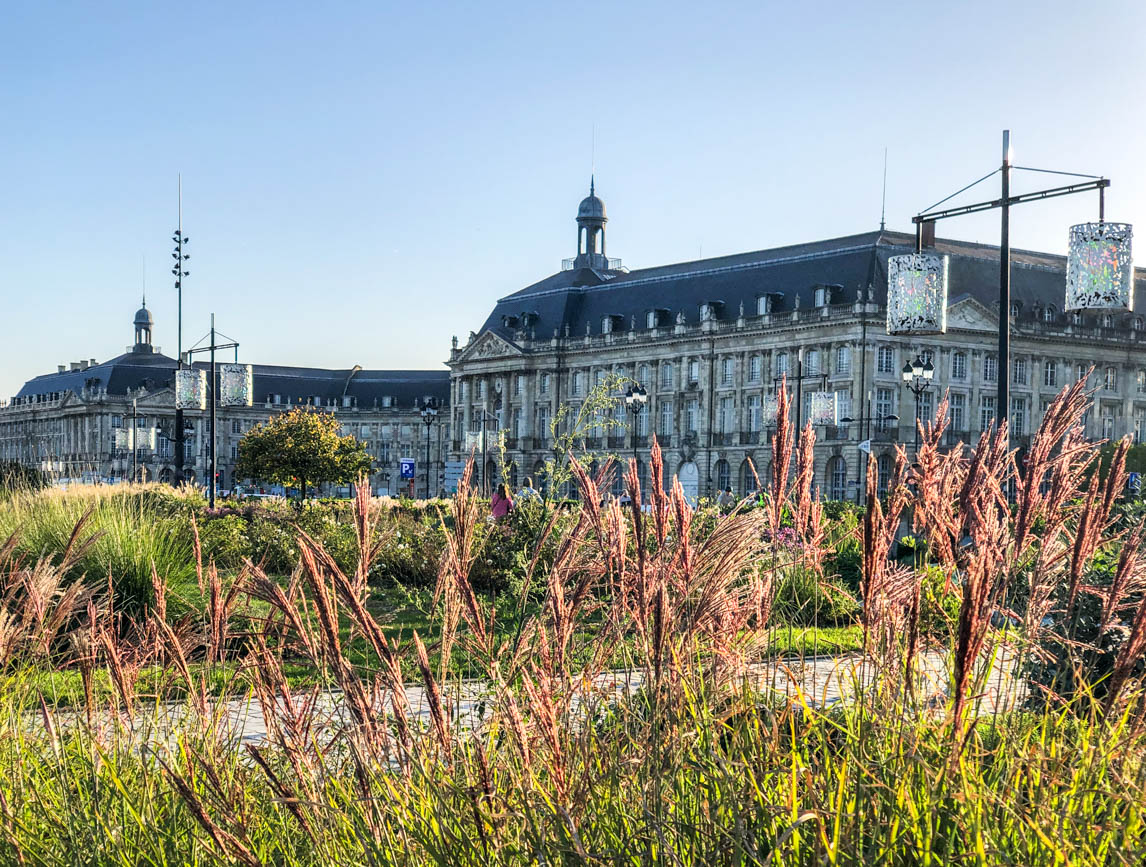
Source: marielaaroundtheworld.com Conclusion
Recap of Bordeaux’s Tourism Treasures
Bordeaux is a treasure trove of experiences, seamlessly blending rich history with vibrant wine culture. From the enchanting vineyards and world-class dining to its stunning UNESCO sites and lively festivals, there’s something for every traveler to enjoy.
- Personal Favorite : I’ve always been captivated by the charm of the Place de la Bourse, especially during sunset.
Future Prospects and Trends
Looking ahead, Bordeaux’s tourism sector is poised for growth, with an emphasis on sustainable practices and innovative experiences that cater to eco-conscious travelers.
- Emerging Trends : Expect more immersive wine experiences, including vineyard stays and farm-to-table tours.
As Bordeaux evolves, it remains a captivating destination where tradition and modernity unite, promising unforgettable experiences for all who visit.
Tourism in Bordeaux
- Bonding Over Baguettes: Family-Friendly Activities in Paris


Source: jessicalynnwrites.com Exploring Paris with Kids
Benefits of Family-Friendly Activities
Exploring Paris with kids opens up a world of unforgettable experiences. Family-friendly activities foster togetherness, spark creativity, and create lasting memories. For instance, watching a child’s eyes light up at the sight of the Eiffel Tower highlights the joy of shared discovery. Plus, engaging in various activities allows families to bond over shared experiences and promotes learning in a fun environment.
Resources for Family Travel in Paris
To make the most of your family trip, utilize these valuable resources:
- Travel Blogs : Many families share their experiences and tips on navigating Paris with children.
- Guided Tours : Look for kid-friendly tour operators that cater specifically to families.
- Local Parks and Museums : Websites often list family days and special activities tailored for children.
These resources ensure a smooth and enjoyable vacation!
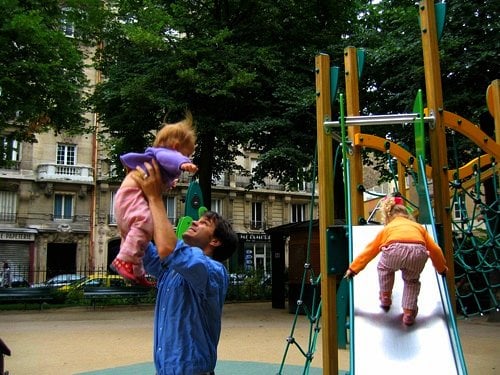
Source: www.davidlebovitz.com Unleashing Creativity at Louvre Museum
Family-Friendly Tours
The Louvre Museum isn’t just for art lovers; it’s a canvas for family fun! Family-friendly tours guide you through the museum’s vast collection with engaging stories crafted specifically for kids. Imagine your child’s excitement while learning about the Mona Lisa’s mysterious smile!
- Guides tailored for young audiences : Each tour is designed to spark curiosity.
- Interactive elements : Some tours include scavenger hunts, making exploration thrilling!
Interactive Workshops for Kids
To deepen their experience, children can participate in interactive workshops. These hands-on sessions encourage creativity through art-making.
- Art workshops : Kids can create their masterpieces inspired by famous works.
- Role-playing activities : Children can dress up as historical figures, adding an element of fun and education!
These enriching opportunities at the Louvre not only cultivate creativity but also foster a love for art in young minds.

Source: jessicalynnwrites.com Fun at the Eiffel Tower
Activities for Families
Visiting the Eiffel Tower promises a day packed with family fun! Kids will love taking the elevator to the second floor for incredible views over Paris. Additionally, the spacious gardens surrounding the tower offer perfect spots for picnics and games.
- Photo opportunities : Capture family moments against the iconic backdrop.
- Guided tours : Join a family-friendly tour to learn fun facts about the tower’s history!
Tips for Visiting with Children
To make your visit smooth and enjoyable, consider these tips:
- Go early or late : Avoid peak hours for shorter wait times.
- Bring snacks : Keep energy levels high with some quick bites!
- Plan a playtime : Schedule breaks at nearby parks to let the kids unwind.
With these strategies, a trip to the Eiffel Tower can be both delightful and memorable for the whole family!

Source: www.marcieinmommyland.com Discovering Parisian Parks and Gardens
Picnic Opportunities
After a day filled with sightseeing, there’s nothing better than relaxing in a Parisian park for a picnic. Popular spots like the Luxembourg Gardens and Parc des Buttes-Chaumont provide beautiful backdrops for family meals.
- Local markets : Grab fresh baguettes, cheeses, and pastries for the perfect picnic basket.
- Scenic views : Enjoy meals surrounded by blooming flowers and lush greenery!
Play Areas and Recreational Facilities
Many parks also feature dedicated play areas and recreational facilities for kids.
- Playgrounds : Kids can climb, swing, and slide to their hearts’ content.
- Sports courts : Family-friendly parks often have facilities for soccer, basketball, and more.
With these fantastic amenities, exploring Parisian parks becomes an ideal way to blend relaxation and play for the whole family!

Source: cdn.getyourguide.com Cultural Immersion through Cooking Classes
Child-Friendly Cooking Workshops
Embracing French culture through cooking classes is an enriching adventure for the entire family. Child-friendly cooking workshops offer hands-on experiences that make learning fun. Picture your little ones rolling dough and mixing ingredients while giggling with excitement!
- Interactive sessions : Many classes allow kids to take the lead in creating their own dishes.
- Expert chefs : Guided by professional chefs, children learn culinary techniques while having a blast!
Tasting Authentic French Cuisine
After cooking, it’s time to savor the fruits of your labor! Tasting authentic French cuisine is a delightful experience that expands young palates.
- Traditional favorites : Enjoy dishes like ratatouille or crepes, allowing kids to discover new flavors.
- Family meals : Sharing the meal fosters bonding and gives everyone a sense of accomplishment.
These culinary experiences not only enrich your family’s visit but also create lasting memories steeped in French culture!

Source: www.activitygift.com Adventure Seekers: Disneyland Paris
Attractions for Different Ages
For adventure seekers, Disneyland Paris is a magical realm that offers something for everyone! From thrilling rides for the older kids to gentle attractions for the littles, the park ensures no one is left out.
- Younger kids : Enjoy charm-filled rides like “It’s a Small World” and “Dumbo the Flying Elephant.”
- Thrill-seekers : Splash Mountain and Big Thunder Mountain offer adrenaline-pumping excitement!
Family-Friendly Shows and Entertainment
To top off the fun, Disneyland Paris presents a variety of family-friendly shows and entertainment.
- Character meet-and-greets : Kids can hug their favorite Disney characters and capture unforgettable photos.
- Parades and fireworks : Every evening comes alive with dazzling parades and stunning fireworks that the whole family will adore!
With its mix of attractions and lively entertainment, Disneyland Paris guarantees an unforgettable adventure for families of all ages!
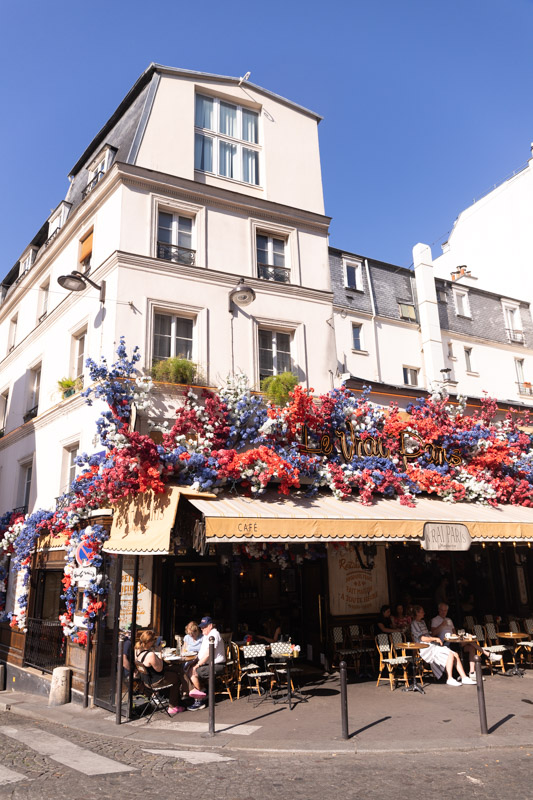
Source: www.ytravelblog.com Exploring Neighborhoods: Montmartre and Le Marais
Child-Centric Attractions
Navigating the charming streets of Montmartre and Le Marais reveals delightful, child-centric attractions. In Montmartre, children will love exploring the vibrant artists’ square, Place du Tertre, where local painters create captivating works right before their eyes.
- Sacré-Cœur Basilica : The climb up to the basilica offers stunning views of Paris and a fun challenge for little legs!
- Playgrounds : Both neighborhoods feature lovely parks where kids can run and play freely.
Family-Friendly Restaurants and Ice Cream Shops
After a day of exploration, dining in these neighborhoods is a treat. Look for family-friendly restaurants that serve delicious French cuisine without the fuss.
- Bistros with kids’ menus : Many local eateries provide options that cater to younger palates.
- Ice cream shops : Indulge in sweet treats at famous places like Berthillon, offering artisanal flavors that everyone will enjoy.
With engaging attractions and delightful eateries, Montmartre and Le Marais become perfect family-friendly exploration zones in Paris!
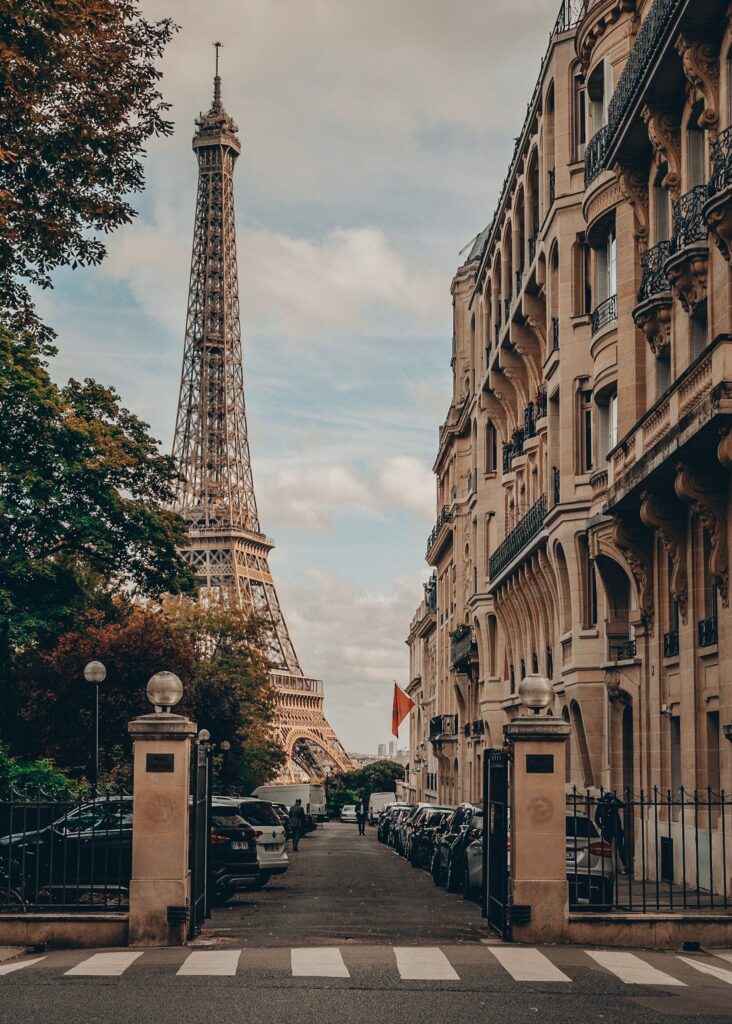
Source: www.adventuroustastes.com Navigating Paris with Ease
Transportation Tips for Families
To make the most of your Paris adventure, knowing how to navigate the city is essential, especially with kids in tow. Public transportation is both convenient and efficient.
- Metro with strollers : Opt for stations with elevators if you’re using a stroller.
- Family passes : Consider purchasing a Paris Visite pass for unlimited travel on public transport, which can save time and money!
Child-Friendly Accommodation Options
Finding the right place to stay is crucial for a family-friendly experience. Look for accommodations that cater to families’ needs.
- Family suites : Many hotels offer suites or adjoining rooms, providing extra space for everyone.
- Apartments : Renting an apartment gives you kitchen facilities for quick meals and a cozy home-like experience.
These transportation tips and accommodation options ensure family comfort while exploring the enchanting city of Paris!
تعتبر الجونة واحدة من أجمل الوجهات السياحية في مصر، حيث تتميز بشواطئها الخلابة ومناخها المعتدل وطبيعتها الساحرة. إذا كنت تبحث عن تجربة فريدة تجمع بين الاسترخاء والمغامرة، فإن الجونة هي الخيار الأمثل. في هذا المقال، سنستعرض أبرز المعالم والأنشطة السياحية في الجونة، مع التركيز على الكلمات الدلالية الأكثر بحثًا في السياحة داخل مصر.

أبرز المعالم السياحية في الجونة
شواطئ الجونة
تمتاز شواطئ الجونة بالرمال البيضاء والمياه الفيروزية. يمكن للزوار الاستمتاع بمجموعة متنوعة من الأنشطة المائية مثل الغوص، وركوب الأمواج، والتزلج على الماء.
المدينة القديمة
تتميز بتصميمها المعماري الفريد والمطاعم الراقية والمحلات التجارية. إنها المكان المثالي للتنزه والاستمتاع بالأجواء المحلية.
مرسى الجونة
يعد وجهة رائعة لمحبي اليخوت، حيث يمكن للزوار القيام بجولات بحرية أو تناول الطعام في المطاعم المطلة على البحر.
ملاهي الجونة المائية
تعتبر وجهة مثالية للعائلات، مع مجموعة من الألعاب المائية الممتعة.
مركز الجونة للغوص
يقدم دورات تدريبية للمبتدئين والمحترفين، مع مجموعة من رحلات الغوص لاستكشاف الشعاب المرجانية.
الأنشطة السياحية
رحلات الدراجات: يمكن للزوار استئجار دراجات واستكشاف المناظر الطبيعية الخلابة.
جولات السفاري: توفر الجونة فرصًا رائعة لاستكشاف الصحراء والمغامرات في الطبيعة.
الاسترخاء في المنتجعات: تقدم الجونة مجموعة من المنتجعات الفاخرة التي توفر خدمات السبا والاسترخاء.
أماكن الإقامة
منتجع كاسا كوكو: يقدم إقامة فاخرة مع إطلالات على البحر وخدمات ممتازة.
فندق داوسون: يعتبر خيارًا مريحًا للعائلات والمجموعات.
المطاعم
مطعم لا روزا: يقدم أشهى الأطباق الإيطالية والمأكولات البحرية.
مطعم كيتو: معروف بأجوائه الرائعة والأطباق المحلية.
نصائح للزوار
أفضل وقت للزيارة: يُفضل زيارة الجونة في فصلي الربيع والخريف للاستمتاع بجو معتدل.
تجربة الثقافة المحلية: حاول تذوق الأطباق المحلية وزيارة الأسواق التجارية.
حجز الأنشطة مسبقًا: يُفضل حجز الأنشطة السياحية مثل الغوص والرحلات البحرية مسبقًا لتجنب الازدحام.
نصائح قبل السفر إلى الجونة
هناك عدة نصائح يجب معرفتها قبل زيارة الجونة، من أهمها:
اللغة الأم في الجونة هي العربية، إلا أنه يمكن أن يكون الزائر مرتاحًا بما يخص اللغة التي سيستخدمها في المنطقة؛ إذ يوجد كثير من المصريين يتواصلون باللغة الإنجليزية وبعضهم يتحدث ببعض اللغات الأخرى.
الأسعار في مصر بشكل عام ليست باهظة إلا أنها في منطقة الجونة تكون أعلى قليلًا من باقي مناطق الجمهورية.
العملة المستخدمة في مصر هي الجنيه المصري إلا أنه يمكن الدفع باليورو أو الدولار في منطقة الجونة، كما تقبل بطاقة الائتمان في معظم الأماكن في المنطقة أيضًا، إلا أنه من الأفضل أن تبقى النقود في المتناول تجنبًا للإحراج.
مياه الصنبور تكون غير صالحة للشرب في العادة ولا ينصح باستخدامها، لذا يفضل استخدام المياه المعدنية أو المياه المغلية فقط للشرب.
خدمات تنظيم الرحلات السياحية تتوفر في المنطقة على نطاق واسع، وستساعد الزوار في اقتراح عدة أمور لمشاهدتها أو تجربتها في المنطقة.
خدمات الرعاية الطبية موجودة في المنطقة بجودة عالية، وقد يحتاج السائح إلى ما يقارب 20 إلى 40 دولارًا أمريكيًا للزيارات الطبية والتي تدفع نقدًا.
الخاتمة
الجونة ليست مجرد مدينة سياحية، بل هي تجربة فريدة تعكس جمال الطبيعة والثقافة المصرية. من الشواطئ الرائعة إلى الأنشطة المثيرة، تقدم الجونة كل ما تحتاجه لتجربة سياحية لا تُنسى. إذا كنت تبحث عن وجهة سياحية مميزة في مصر، فلا تفوت فرصة زيارة الجونة، حيث تنتظرك المغامرات والذكريات الجميلة!
